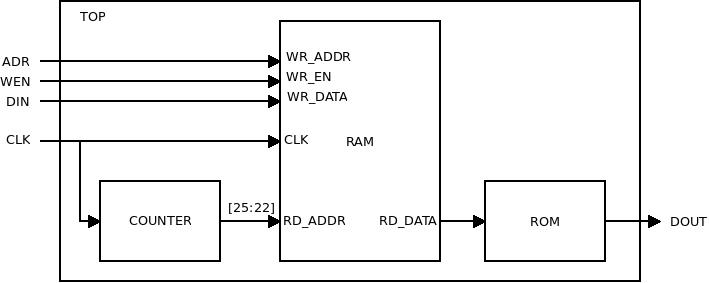Diferență între revizuiri ale paginii „DIC Lab Work 5”
De la WikiLabs
Jump to navigationJump to searchCbira (discuție | contribuții) (Pagină nouă: == Notions and Knowledge Required == * Boolean logic and numbering systems * Syntax Verilog * Tutorial_Quartus_II | Using the Al...) |
Cbira (discuție | contribuții) |
||
| Linia 2: | Linia 2: | ||
* [[Introduction. Verilog HDL and ModelSim | Boolean logic and numbering systems]] | * [[Introduction. Verilog HDL and ModelSim | Boolean logic and numbering systems]] | ||
| − | * Syntax [ | + | * Verilog Syntax [Verilog_EN] |
* [[Tutorial_Quartus_II | Using the Altera Quartus II Synthesis Program]] | * [[Tutorial_Quartus_II | Using the Altera Quartus II Synthesis Program]] | ||
* [http://wiki.dcae.pub.ro/images/f/fc/Pini_la_care_sunt_conectati_dispozitivele_I-O_pe_placa_experimentala_DE1.pdf List of pins for plate DE1] | * [http://wiki.dcae.pub.ro/images/f/fc/Pini_la_care_sunt_conectati_dispozitivele_I-O_pe_placa_experimentala_DE1.pdf List of pins for plate DE1] | ||
Versiunea de la data 26 aprilie 2018 06:59
Notions and Knowledge Required
- Boolean logic and numbering systems
- Verilog Syntax [Verilog_EN]
- Using the Altera Quartus II Synthesis Program
- List of pins for plate DE1
- Sequential Circuits
- Counter
- RAM Memory
Example
- It will describe in Verilog a 16x4b RAM with a read-write port. Reading is synchronous.
- The necessary debugging to connect will be written
- Address to SW7-4 and date of entry to SW3-0.
- writing activation signal at one of the buttons (KEY0 ... KEY3).
- Output memory at LEDR3-0.
- memory clock input to one of the DE1 plate oscillators.
- Schedule the FPGA board, and using the switches and buttons on the board, write 3, 6, and 10 with the values 2, 1 and 7, then read them in the same order. Notice, using the LEDs of the board, if the memory has been stored.
Exercise
- Describe in Verilog a 16x4b RAM with two ports:
- A write-only sync port with the following signals:
- WR_ADDR - the address you write
- WR_EN - write command
- WR_DATA - written data
- A read-only read-only port with the following signals:
- RD_ADDR - read address
- RD_DATA - read data
- A write-only sync port with the following signals:
- The memory will be instantiated in the TOP module as shown below:
<syntaxhighlight lang="verilog"> module COUNTER (
input clk, output reg [31: 0] cnt
)
always @ (posedge clk) cnt <= cnt + 1;
endmodule
ROM modules (
input [3: 0] in, output reg [3: 0] out
)
always @ (in)
houses (in)
0: out=4'b1010;
1: out=4'b0110;
2: out=4'b0011;
3: out=4'b1110;
4: out=4'b1011;
5: out=4'b1111;
6: out=4'b0111;
7: out=4'b1100;
8: out=4'b0001;
9: out=4'b0101;
10: out=4'b1101;
11: out=4'b0000;
12: out=4'b0010;
13: out=4'b0100;
14: out=4'b1000;
15: out=4'b1001;
endcase
endmodule <syntaxhighlight>
- Write the constraints required to connect the TOP module ports:
- DIN to SW7-4,
- ADR at SW3-0,
- WEN la KEY3,
- DOED to LEDR3-0,
- clock input at CLOCK_50.
- Schedule the FPGA board; Write the RAM with the values required to produce DOUT a sequence of numbers indicated by the teacher.
Submission of Exercises
For scoring, the following files will be submitted to the e-mail address indicated by the teacher.
An archive zip
- All Verilog files (with the .v extension) containing the circuit description
- A constraint file with the .qsf extension
- A Quartus project file with the .qpf extension
Note that the archive will only contain files (without directories).
The subject of the email message must follow the [Name] _ [First Name] _ [Group] _Mem example Popescu_Ion_423B_Mem
